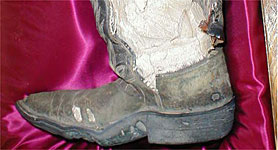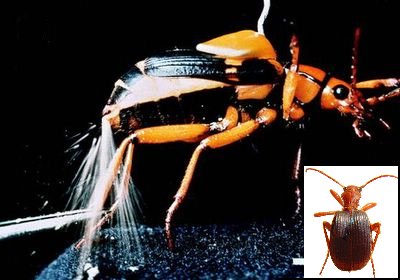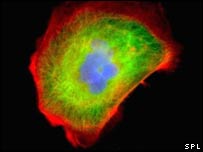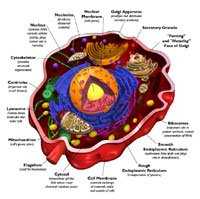| Go to GodRules.net
and read about the following: The
Atmosphere and Water
The view from Space
"I didn't feel like I was a participant.
It was like sitting in the last row of the balcony, looking down at all
of that play going on down there . . I had that insignificant feeling of
the immensity of this, God's creation."—Charles
Duke, Jr., in Kevin Kelley, The Home Planet (1988) [USA].
Mathematics of Swiftlet's
Clicks. Swiftlets are
small birds that live in southeastern Asia and Australia. They make
their nests far back in dark caves.
Fog Drinking Beetle.
How can a wingless beetle, living in
a desert, get enough water? This one does it by drinking fog.
Electrical Impulses of Knife Fish.
The Designer
gave these fish the ability to change wavelengths! As soon as two knife
fish draw near to one another, they immediately stop transmitting
impulses for a couple moments, and then both switch them back on —but
this time on different frequencies to each other!
Underground Flowers.
We all know that flowers never grow
underground; but here are two that do.
Knowing where to Jump (Goby fish).
This little
fellow always jumps just the right amount, at the right place, and in
the right direction —without ever landing on rock! How can this fish
know where to leap out of the water, and in what direction?
Varieties of Roses.
The making of new subspecies is not
evolution. An example of this would be the rose. More than 8,000
varieties of rose have been developed for garden cultivation, yet all of
them are descended from only a few wild forms.
Migrating Lobsters.
Spiny lobsters live and spawn near
coral reefs of the Bahamas and the Florida coast. But each fall, the
lobsters know that it is time to leave.
Magnum Moss.
The various sphagnum mosses (the kind
you purchase at garden supply stores as mulch) grow in peat bogs. These
mosses have a special way of ejecting their seeds.
Spider makes his Door.
Although only an inch long, the
female trap-door spider makes excellent doors and latches. After digging
a burrow six inches deep into soft ground, she lines the walls with
silk, and then builds the front door.
Fast Growing Trees.
It is always a marvel how a tiny seed
can grow into a mighty tree. But, although it takes time for a tree to
grow, some trees grow very rapidly.
The fastest-growing tree in the world is
the AIbizzia falcafa, a tropical tree in the pea family.
Scientists in Malaysia decided to measure how fast one could grow, and
found it reached 35.2 feet in 13 months.
Baby Glue Guns (Ants).
Ants have discovered that babies make
good glue guns. Arriving at the construction site, these ants give their
babies a squeeze, and then point them toward the leaves.
Milking Trees.
The South American milk tree (Brosimum
utile) belongs to the fig family and produces a sap that looks, tastes,
and is used just like cow's milk.
Running on Water (skimmer beetle).
How can a skimmer —the little
rove beetles which glide effortlessly over a water pond —run across the
surface of the water?
It is now known that they are pulled by
the surface tension of the water ahead of them. But how can this be, for
is there not just as much surface tension in the water behind them? No,
there is not.
Clown Fish.
Other fish have a
certain chemical in the mucus covering their bodies which, when touched
by the arm of an anemone, causes its stings to discharge. Clownfish lack
this chemical, and are thus able to live amid those tentacles, and let
the anemone defend them.
Fish that build nests.
Some fish are born in nests. The
labyrinth family (which include the Siamese fighting fish) are
air-breathing fish. They build nests in vegetation near the surface.
Sticky bubbles are blown by the male, who places the eggs in the nest
and watches over them until they are born, and thereafter for a time.
Stick beating bird.
No, this isn't a stick beating a
bird, but a bird beating with a stick. The huge black palm cockatoo of
northern Australia enjoys screeching high notes and whistling low ones
to its neighbors. It wants everyone to know it is there. Yet even this
is not enough to satisfy it.
To insure that no rival cockatoos enter
their territory, breeding pairs signal their ownership of a territory by
breaking off a small stick with their claws and beating it against a
hollow tree.
Mexican Tree Frogs.
Some Mexican tree frogs use
their heads to survive. Called helmet frogs, they have bony crests on
top of their skulls. When drought begins, these little frogs climb into
tree trunks or into holes in bromeliads (plants of the pineapple family)
that grow high in trees.
Once inside, they use the tops of their
heads to seal off the entrance! Then they just sit there till rain falls
again.
Milky Way Caves.
Skin breathers.
Most amphibians breathe with gills
when they are larvae in the water, and later with lungs when they become
adults and live on land. But there are also land-living, cave-dwelling,
tree-climbing, and water-living species that do not breathe through
lungs or gills. Instead, they breathe through their skin!
Egg producers.
The champion is the giant clam. Once each
year, for 30 or 40 years, it will shoot one thousand million eggs out
into the water. This is 1,000,000,000, or a full billion.
Most extensive Miner.
The Russian mole rat is a champion
burrower. In its search for underground bulbs, roots, and tubers, it
excavates long tunnels that include resting chambers, food storage
rooms, and nesting areas. Scientists excavated one tunnel system in the
former Soviet Union and found it was 1,180 feet in length. They
calculated that it took about two months to construct.
The Russian mole rat is blind and digs
with its teeth, not with its claws.
Children's Children.
The greenfly is a live-bearer insect, which
means it does not lay eggs but brings forth its babies live, as mammals
do.
But the greenfly does it a little
differently. During the summer months, when there are lots of food
plants in leaf, she produces eggs within herself which are self-fertile;
that is they were never fertilized by a male. In addition, all her eggs
will hatch into females. But there is more: Each of her daughters will
automatically be fertile, so that daughter will, in turn, be able to lay
fertile eggs.
Kangaroo.
Armadillo.
all four babies in each litter come from one
egg, which split after fertilization. So each litter is always the same
sex.
Frightening the Enemy (lizards).
The truth is that a Master Designer
provided the little creature with what it needed.
The Australian frilled lizard is about 3
feet long. When an enemy draws near, this lizard raises a frill which
normally is flat along the back. This frill stands out in a circular
disk which can be 2 feet across. How did that frill get there? Did the
lizard ''will it" into existence? Did it tinker with its own DNA? How
does it know to use it to frighten enemies?
Baby Nursery (eider
duck). The eider duck sets
devotedly on her eggs without eating anything. When they hatch, she
leads them down to the pond.
Vision through Skin.
Some insects can see light through
their skin, even when their eyes are covered.
Sunglasses in nature.
Yes, even sunglasses existed in
nature before man began using them. Seabirds, such as gulls, terns, and
skuas have built-in sunglasses. All day long they have to search for
food, as they glide above the ocean's surface. Staring down into the
waves for fish, the glint of sunlight on the waves reflects up into the
eyes. The solution is sunglasses, which they have.
Flicker's long tongue (wood pecker).
When the grub is heard chewing
its way through the wood —which it does most of the time, —the bird
swiftly bangs on the tree with its sharp bill, drilling a hole as it
proceeds.
Journey to the Unknown (migration).
The young set out each March on a
4,000-mile migration from their parents' breeding grounds in New
Zealand. They fly west to the ocean's edge and out over it. How would
you like to do that? The Pacific is an incredibly big ocean.
With no bird to instruct or guide them,
these young birds accurately follow the path of the parent flock over a
route of 1,250 miles of open sea.
Amazing House of the Termite.
Termites build their homes of mud. Their
homes are amazing structures, as we will learn below. Yet those large,
complicated buildings are made by creatures which are blind. They have
no instructors to teach them, and they spend their lives laboring in the
dark. Nevertheless, they accomplish a lot.
|

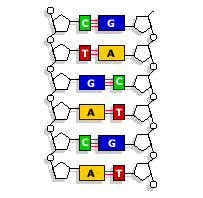
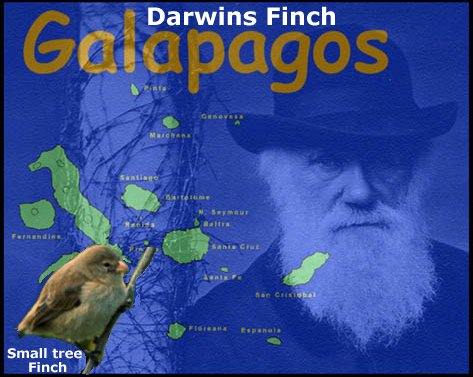
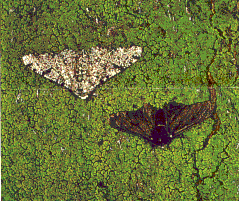
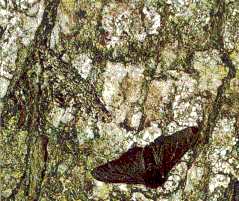
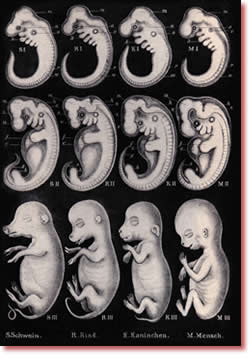
 The Earth is located the right
distance from the sun. Consider the
temperature swings we encounter,
roughly -30 degrees to +120 degrees.
If the Earth were any further away
from the sun, we would all freeze.
Any closer and we would burn up.
Even a fractional variance in the
Earth's position to the sun would
make life on Earth impossible. The
Earth remains this perfect distance
from the sun while it rotates around
the sun at a speed of nearly 67,000
mph. It is also rotating on its
axis, allowing the entire surface of
the Earth to be properly warmed and
cooled every day.
The Earth is located the right
distance from the sun. Consider the
temperature swings we encounter,
roughly -30 degrees to +120 degrees.
If the Earth were any further away
from the sun, we would all freeze.
Any closer and we would burn up.
Even a fractional variance in the
Earth's position to the sun would
make life on Earth impossible. The
Earth remains this perfect distance
from the sun while it rotates around
the sun at a speed of nearly 67,000
mph. It is also rotating on its
axis, allowing the entire surface of
the Earth to be properly warmed and
cooled every day.
